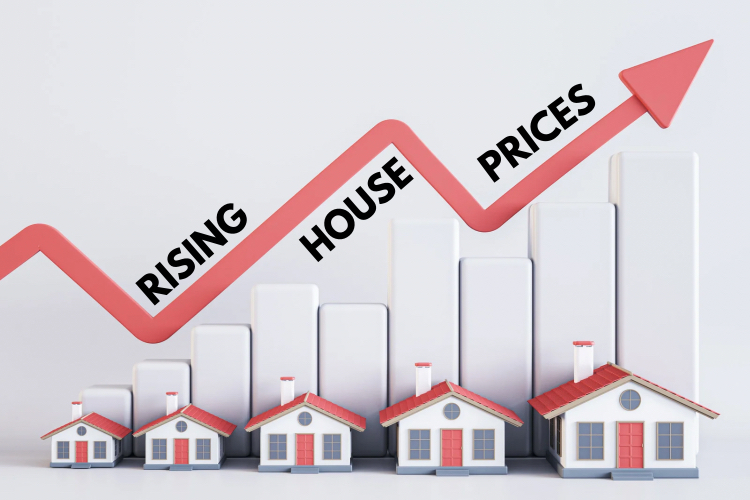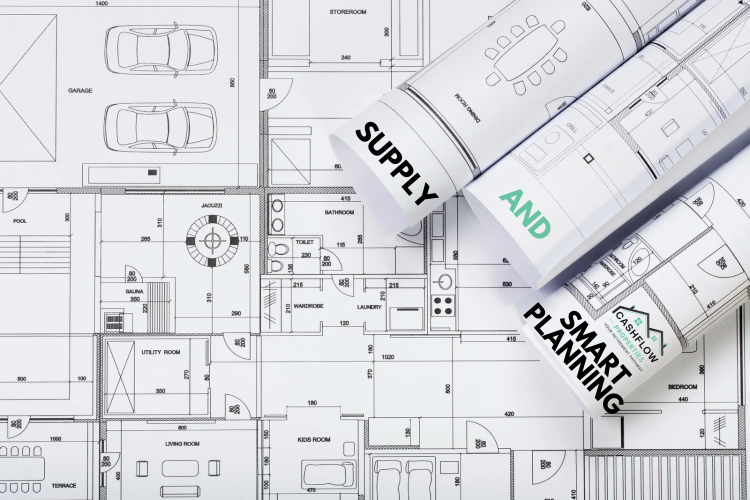
Building the Future – Why Migrants Aren’t to Blame for Australia’s Rising House Prices
The conversation around Australia’s housing market often circles back to one popular claim: that migrants are the reason property prices keep rising. It is a simple idea, but a misleading one. Migration plays a role in shaping housing demand, yet it is far from the main factor driving price growth. The real challenge lies in how slowly Australia builds new homes, how complex the planning and approval process has become, and how rising construction costs and investor trends have tilted the market.
The good news is that these challenges can be solved. With the right focus on boosting housing supply, improving planning efficiency and supporting balanced development, Australia can create a fairer and more affordable housing future for everyone – new arrivals and long-time residents alike.
Understanding What’s Really Happening
Australia’s population continues to grow steadily. According to the Australian Bureau of Statistics (ABS), the national population reached 27.54 million as of March 2025, with net overseas migration contributing about 315,900 people over the year. Migrants bring essential skills, strengthen local communities and support industries from healthcare to construction. They add to housing demand, but they also contribute to the workforce that builds the homes, roads and schools we all rely on.
When you look at the numbers, the issue is not that more people are arriving. It is that not enough new homes are being built to match Australia’s natural population growth and changing demographics.
Too Few Homes Being Built
One of the main reasons house prices have risen is that the supply of new dwellings has not kept up with demand. Recent reports show a 6 percent fall in dwelling approvals in August 2025, with approvals dropping below 15,000 nationally. Even when projects are approved, many get stuck for months or years waiting for council permits, environmental checks and infrastructure agreements.
In parts of New South Wales, thousands of dwellings have been approved but never built because of planning bottlenecks. This delay between approvals and completions limits the number of homes available, especially in fast-growing areas like Western Sydney.
If Australia could make the approval process smoother and more predictable, many of these projects could move from paper to reality. That alone would help ease price pressures in high-demand areas.
Rising Construction Costs Add Pressure
Even when projects move ahead, developers face another challenge: rising construction costs. The cost of materials, skilled labour and logistics has climbed sharply in recent years. According to KPMG, cost escalation in 2025 exceeded early forecasts, with most capital city markets operating near full capacity.
These costs make it harder for developers to keep projects affordable. Higher building expenses push up final sale prices, especially for smaller developers and builders working on tight margins. Encouraging innovation in construction – such as modular building methods, better training for tradespeople and improved supply chain efficiency – could help reduce costs and increase the number of homes that can be built each year.
Investor Behaviour and Market Balance
Investors also play a major role in shaping the housing market. Data from the recent studies show that more than two million Australians own an investment property, and some hold several. Many benefit from tax incentives such as negative gearing and capital gains concessions.
These incentives were originally designed to encourage investment in housing, but they often lead to competition for existing homes rather than supporting new construction. When investors focus on buying established properties in already tight markets, it adds to price pressure. Reforming these incentives so that they reward investment in newhousing would not only increase supply but also open up more opportunities for first-home buyers.
Planning Where Homes Are Needed Most
Australia also faces a geographical challenge. Developers naturally focus on areas with the highest returns, which often means inner-city or well-connected suburbs. Outer suburbs and regional areas, where affordability could be better, tend to see less activity.
To correct this imbalance, governments at every level can encourage development in growth corridors by providing supporting infrastructure such as transport, utilities and community facilities. New initiatives, including pre-approved housing designs and build-to-rent models, show positive intent but need stronger implementation to make a real difference.
By aligning housing projects with job growth and transport networks, Australia can create vibrant, well-planned communities that attract both residents and businesses.
It’s About Supply and Smart Planning, Not Migration

When you look at the data from CoreLogic and other market analysts, you find that property prices are not rising everywhere. Some cities and regions are stable, while others have even seen small declines. This proves that the problem is not about overall population growth but about where demand is exceeding supply.
In markets like Sydney and Melbourne, where new supply is slow and land is limited, prices have continued to climb. But in regions where planning has been proactive and development approvals have flowed more freely, prices have remained steady.
So, rather than restricting migration – which would harm economic growth and reduce the labour needed to build homes – the focus should be on accelerating supply and improving planning efficiency.
Building Solutions for the Future
There are many positive steps Australia can take to build a healthier housing market for the future:
1. Simplify the approvals process
Streamlined, transparent planning systems would allow projects to start sooner and reduce costs for builders and buyers alike.
2. Support affordable and sustainable construction
Encouraging the use of innovative materials, prefabrication and green building methods can lower costs and make housing more energy efficient.
3. Rebalance investment incentives
Adjusting tax policies to reward investors who support new housing rather than existing stock will help increase the number of homes available.
4. Promote balanced regional development
Infrastructure-led planning and investment in regional centres can distribute growth more evenly across the country, relieving pressure on capital cities.
5. Strengthen partnerships
Collaboration between government, developers and community housing providers can create long-term, inclusive housing solutions that meet diverse needs.
A Positive Way Forward
Migrants are not the cause of Australia’s housing challenges; they are part of the solution. They bring skills, ideas and cultural diversity that strengthen the economy and enrich communities. The real focus should be on how to make housing more accessible for everyone by building faster, planning smarter and investing in the right places.
Australia has the expertise, resources and creativity to overcome the current housing shortage. By improving planning efficiency, encouraging innovation in construction and promoting fairer investment practices, the nation can ensure that housing affordability becomes a shared reality.
The path forward is not about blame but about building together. When Australia gets its housing strategy right, everyone benefits from new arrivals starting their lives here to generations of Australians looking for a place to call home.

